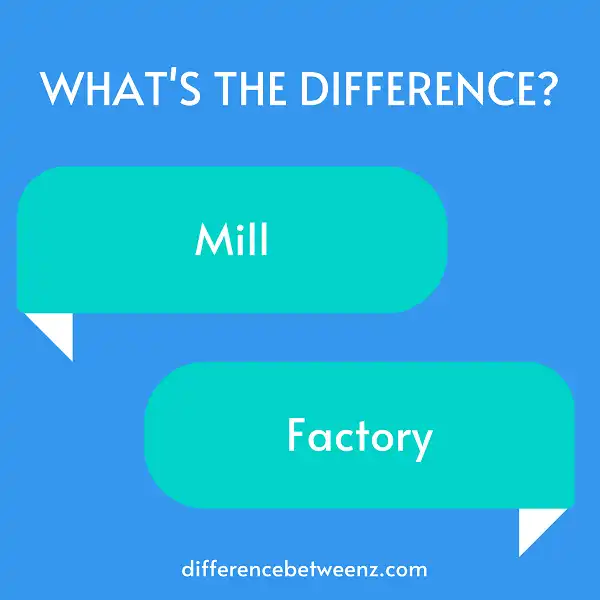Between the mill and factory lies a great divide. Though their purposes may be the same, their methods couldn’t be more different. To understand the origins of this distinction, we have to look back to when each first emerged.
What is Mill?
A Mill production building is a type of industrial facility where milling takes place. Mill production buildings are usually large facilities with numerous pieces of milling equipment. These buildings can be used for a variety of milling operations, including flour milling, animal feed milling, and lumber milling. Mill production buildings often have on-site storage facilities for raw materials and finished products. In some cases, these buildings may also house office space and other support functions. Mill production buildings are typically located in industrial areas or near ports or other transportation hubs.
What is Factory?
A factory is an industrial building where workers manufacture goods or operate machines processing one product into another. Factory buildings are typically large, single-story structures with ample parking and loading docks to accommodate trucks. Some factories are located in industrial parks; others are located on city outskirts or in rural areas. Factory buildings often have high ceilings and large windows to let in natural light. Inside, the factory floor is divided into areas for different production processes. These may include assembly, painting, and packaging. Factory workers typically work on an assembly line, performing repetitive tasks to mass-produce products. Factory production is usually very efficient, but it can be monotonous and dangerous work.
Working conditions in factories have improved dramatically since the early days of the Industrial Revolution when child labor was common and working conditions were often unsafe. Today, most factories in developed countries are clean and well-lit, and workers have access to safety equipment and regular breaks. However, factories in developing countries may still be cramped and dirty, with few safety precautions for workers. Factory jobs can be very demanding, both physically and mentally.
Workers may be required to stand for long hours, lift heavy objects, or perform repetitive tasks. The noise level in some factories can be loud, making it difficult to communicate with co-workers. Factory work can be monotonous and mundane, leading to boredom and stress. Despite these challenges, factory jobs are an important source of employment around the world.
Difference between Mill and Factory
Mill and factory are terms that are often used interchangeably, but there is a definite difference between the two. A mill is generally defined as a building or group of buildings in which a particular type of work is carried out. For example, a paper mill will specialize in the production of paper, while a textile mill will focus on fabric production. In contrast, a factory is a larger and more complex operation that typically includes several different types of production. In addition to manufacturing, factories may also include offices, warehouses, and other support services. The size and scope of factory operations can vary greatly, but they are always larger and more complex than mills.
Conclusion
The mill provided an important service to the early American economy, and it is worth learning about its history. It was an important step in the development of factories and the industrial revolution. However, there are some key distinctions between mills and factories that are worth mentioning. Mills tended to be smaller businesses, while factories were much larger. Mills also used water power to turn the gears, while factories relied on steam engines. Finally, mills produced textiles, while factories produced a variety of products. Thanks for reading!


